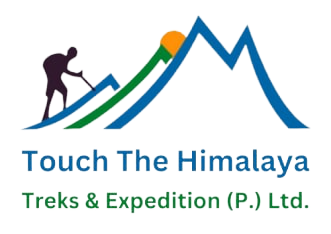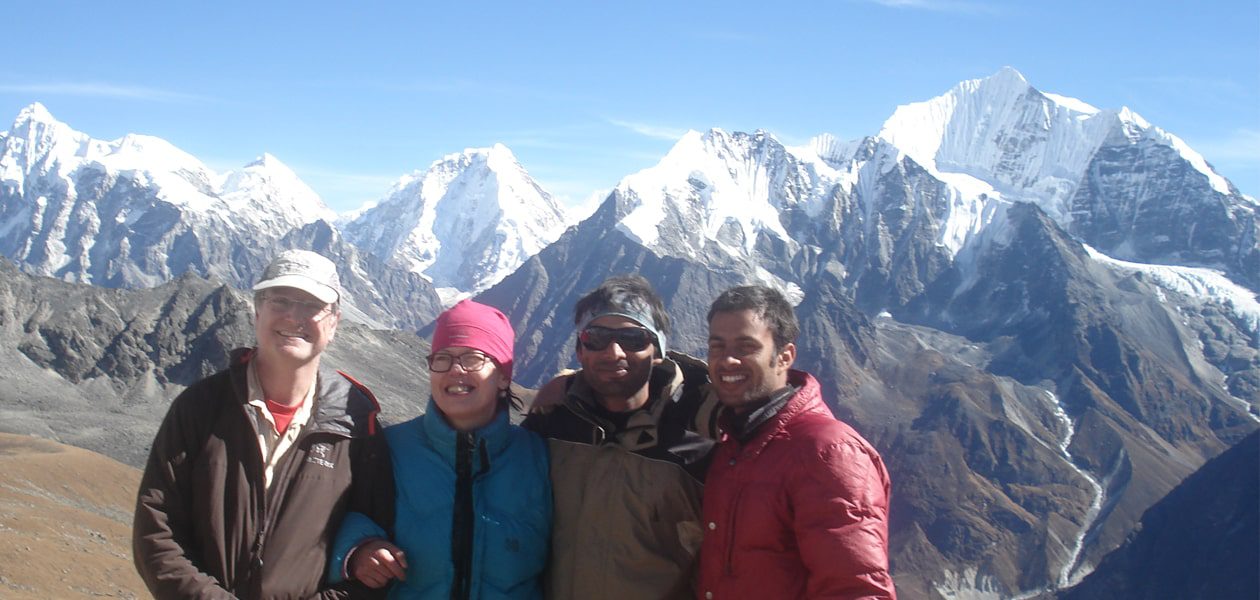Langtang Valley Trek -8 Days
Unveiling the Majestic Journey-
Duration
8 Days
-
Activity
Trekking
-
DifficultyModerate Trek
Langtang Valley Trek offers manageable trails with some steep sections, requiring moderate fitness levels and basic trekking experience.
-
Max. Altitude
Tserko Ri (5,033m)
-
Starts
Kathmandu
-
Ends
Kathmandu
-
Group Size
1-20
-
Best Season
March-May Sept.-Dec.
Price Per Person
- 1 PAX US$ 645
- 2-3 PAX US$550
- 4-5 PAX US$535
- 6-9 PAX US$500
- 10-14 PAX US$475
- 15-20 US$450
- Itinerary
- Route Map
- What Included / Excluded
- Dates & Availability
- Additional Information
- FAQ's
Langtang Valley Trek – A Hidden Gem in the Himalayas
Langtang Valley Trek – A Complete Guide to Hiking in Nepal (2025)
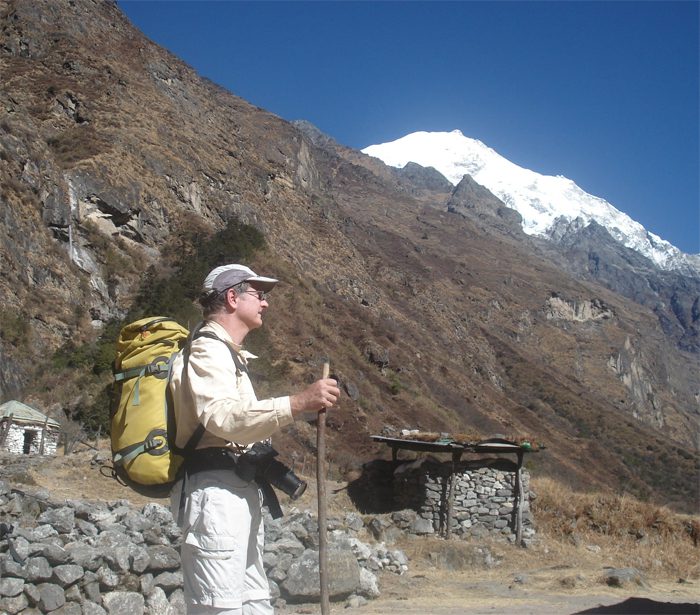
Want to experience the breathtaking beauty of the Himalayas without the crowds? The Langtang Valley Trek is the perfect choice! Nestled in the heart of Langtang National Park, this trek offers stunning mountain views, rich Tamang culture, and diverse wildlife.
Located just a day’s drive from Kathmandu, Langtang is often called the “Valley of Glaciers” due to its dramatic landscapes, snow-capped peaks, and glacial rivers. Unlike Everest Base Camp or Annapurna Circuit, Langtang is a quieter, off-the-beaten-path trek that still delivers an unforgettable adventure.
Langtang Valley Trek, Nestled amidst the grandeur of the Himalayas lies the Langtang Valley, a pristine gem awaiting discovery. Embark on an unforgettable journey with Touch The Himalaya as we guide you through the breathtaking landscapes, cultural richness, and awe-inspiring vistas of the Langtang Valley Trek in Nepal.
Key Reasons to Choose Langtang Valley Trek
The Langtang Valley Trek is one of Nepal’s most beautiful yet underrated treks. While treks like Everest Base Camp and Annapurna Circuit attract thousands of trekkers each year, Langtang remains a hidden gem, offering stunning landscapes, rich culture, and fewer crowds.
Less Crowded, More Peaceful 🏞️
Unlike Everest, Annapurna and Manaslu Circuit Trek Langtang Valley Trek is less commercialized, making it perfect for trekkers looking for a serene and peaceful experience. The trails are quieter, allowing you to connect with nature and fully enjoy the trek without large crowds.
Breathtaking Mountain Views ⛰️
The trek offers panoramic views of Langtang Lirung (7,227m), Ganesh Himal, Dorje Lakpa, and other Himalayan peaks. The breathtaking sunrise view from Kyanjin Ri (4,773m) is one of the most rewarding experiences of the trek.
Table of Contents
Rich Tamang & Tibetan Culture 🏯
The Tamang people, descendants of Tibetan settlers, have a unique culture, language, and traditions. During the trek, you’ll visit Tibetan-style villages, Buddhist monasteries, and ancient prayer wheels. A visit to Kyanjin Gompa, the region’s most sacred monastery, is a spiritual highlight.
Langtang National Park – A Wildlife Paradise 🦌
Langtang Valley is part of Langtang National Park, home to red pandas, Himalayan tahr, langur monkeys, musk deer, and over 250 bird species. The trek takes you through lush rhododendron forests, high alpine meadows, and glacial valleys, offering a variety of natural beauty.
Short & Accessible Trek 🚗
- Just 7-8 hours drive from Kathmandu (no flights needed).
- Can be completed in 7-10 days, making it perfect for those with limited time.
- Less risk of flight delays compared to treks like Everest Base Camp.
Suitable for Beginners & Experienced Trekkers 🥾
Langtang Valley Trek is moderately difficult, making it ideal for both beginners and experienced hikers. The trails are well-defined, with gradual ascents, and no technical climbing skills are required.
Langtang Valley Trek – 8 Days Outline Itinerary
Day 1: Drive from Kathmandu to Syabrubesi (1,503m) 🚗
Day 2: Trek from Syabrubesi to Lama Hotel (2,480m) 🥾
Day 3: Trek from Lama Hotel to Langtang Village (3,430m) 🏔️
Day 4: Trek from Langtang Village to Kyanjin Gompa (3,870m) 🏯
Day 5: Acclimatization & Hike to Kyanjin Ri (4,773m) or Tserko Ri (5,033m) ⛰️
This is an optional acclimatization day where you can hike to either Kyanjin Ri (4,773m) or Tserko Ri (5,033m) for unparalleled 360-degree mountain views.
Day 6: Trek from Kyanjin Gompa to Lama Hotel (2,480m) 🏡
Day 7: Trek from Lama Hotel to Syabrubesi (1,503m) 🌿
Day 8: Drive from Syabrubesi to Kathmandu 🚌
Langtang Valley Trek Distance & Elevation Chart
| Day | Destination | Distance | Elevation |
|---|---|---|---|
| Day 1 | Kathmandu to Syabrubesi | 122 km (drive) | 1,503m |
| Day 2 | Syabrubesi to Lama Hotel | 11 km | 2,480m |
| Day 3 | Lama Hotel to Langtang Village | 14 km | 3,430m |
| Day 4 | Langtang Village to Kyanjin Gompa | 7 km | 3,870m |
| Day 5 | Kyanjin Ri / Tserko Ri Hike | 6-8 km | 4,773m – 5,033m |
| Day 6 | Kyanjin Gompa to Lama Hotel | 21 km | 2,480m |
| Day 7 | Lama Hotel to Syabrubesi | 11 km | 1,503m |
| Day 8 | Syabrubesi to Kathmandu | 122 km (drive) | 1,400m |
Best Time to Trek Langtang Valley – Seasons, Weather & When to Go ?
Choosing the right season is crucial for the best trekking experience in Langtang Valley. The trek is open year-round, but some seasons offer clear skies, stunning views, and comfortable weather, while others bring challenges like rain, snow, or extreme cold.
🏔️ Best Time to Trek Langtang Valley: Season-Wise Guide
| Season | Months | Weather & Trekking Conditions | Verdict |
|---|---|---|---|
| Spring 🌸 | March – May | Best weather, clear skies, rhododendron blooms, mild temperatures | ⭐⭐⭐⭐⭐ (Best) |
| Autumn 🍂 | September – November | Clear skies, dry trails, best mountain views, peak trekking season | ⭐⭐⭐⭐⭐ (Best) |
| Winter ❄️ | December – February | Cold temperatures, snowfall at higher altitudes, fewer crowds | ⭐⭐⭐ (Challenging) |
| Monsoon 🌧️ | June – August | Heavy rainfall, landslides, slippery trails, cloudy views | ⭐⭐ (Not Recommended) |
🌸 Spring (March-May) – Best Time for Langtang Trek
- Weather: Mild temperatures (5°C to 20°C)
- Scenery: Lush forests, blooming rhododendrons, clear mountain views
- Pros: Comfortable trekking conditions, beautiful landscapes
- Cons: Trails can be slightly busy, especially in April
🌟 Why Trek in Spring?
Spring is one of the best seasons to trek Langtang Valley. The rhododendron forests bloom in vibrant colors, and the skies are usually clear, offering breathtaking views of Langtang Lirung, Ganesh Himal, and Dorje Lakpa.
🍂 Autumn (September – November) – Best Time for Clear Views
- Weather: Dry and stable (5°C to 18°C)
- Scenery: Crystal-clear views, colorful forests, pleasant temperature
- Pros: Best visibility, perfect trekking conditions
- Cons: Peak season means more trekkers and busy teahouses
🌟 Why Trek in Autumn?
If you want the clearest mountain views, autumn is the best time. The monsoon rains clear the dust, resulting in pristine blue skies and unobstructed Himalayan views. This is also the busiest season, so expect crowded teahouses.
❄️ Winter (December – February) – Best for Snow Lovers
- Weather: Cold (-10°C to 10°C), snowfall in higher elevations
- Scenery: Snow-covered trails, frozen rivers, peaceful surroundings
- Pros: Fewer trekkers, unique winter landscapes
- Cons: Extremely cold, possible heavy snowfall, some teahouses may be closed
🌟 Who Should Trek in Winter?
Winter is challenging but rewarding for experienced trekkers who enjoy snowy landscapes and solitude. However, temperatures can drop below -10°C at night, and snowfall may block trails.
🌧️ Monsoon (June – August) – Not Recommended
- Weather: Heavy rainfall (15°C to 25°C), high humidity
- Scenery: Lush greenery, but poor visibility of mountains
- Pros: Fewer crowds, vibrant nature
- Cons: Slippery trails, risk of landslides, leeches on the trail
🌟 Why Avoid Monsoon Trekking?
Due to heavy rainfall, trekking in monsoon is not recommended. The trails become muddy and slippery, and the views are often blocked by clouds. However, if you enjoy lush greenery and don’t mind the rain, it’s possible to trek with proper gear.
🌟 Summary: When Should You Trek Langtang Valley trek?
✅ For the best weather, clear views, and comfortable trekking: March–May (Spring) & September–November (Autumn)
✅ For a quiet, snowy adventure: December–February (Winter)
❌ Avoid monsoon (June–August) due to heavy rain and landslides
Langtang Valley Trek Difficulty, Fitness Level & Altitude Challenges
Understanding the difficulty level and preparing for altitude challenges is crucial for a safe and enjoyable trek. While the Langtang Valley Trek is considered a moderate trek, trekkers should be prepared for long hiking days, altitude gain, and varying trail conditions.

🏔️ Langtang Valley Trek Difficulty – What to Expect
The Langtang Valley Trek is generally categorized as moderate in terms of difficulty. Here’s a breakdown of the factors that will determine the difficulty:
1. Trail Type
- Well-defined trails through forests, rivers, and meadows
- The terrain is mostly gradual uphill or downhill with some steep sections, especially as you approach higher altitudes.
- Some rocky paths and narrow suspension bridges add an adventure element.
2. Trek Duration
- On average, each day of the trek lasts between 5-7 hours, except for the acclimatization day.
- The 10-day itinerary allows for a steady pace, but you’ll still be walking for long hours on some days, especially on the way back.
3. Altitude
The maximum altitude of around 4,773m at Kyanjin Ri or 5,033m at Tserko Ri makes this trek a high-altitude adventure, requiring careful acclimatization.Starting at 1,503m in Syabrubesi, you’ll reach Kyanjin Gompa (3,870m).
💪 Fitness Level – Is Langtang Valley Trek Suitable for You?
The Langtang Valley Trek does not require advanced climbing skills, but you should be in good physical shape. You’ll be trekking for several days at higher altitudes, which requires both mental strength and physical endurance.
General Fitness Requirements
- Stamina: Be prepared for long days of walking (5-7 hours per day).
- Strength: The uphill sections require strength, especially at higher altitudes.
- Flexibility: Stretches and rest are important to avoid injury and fatigue.
- Cardio Fitness: Cardiovascular fitness is key since you’ll be trekking for several days, so it’s essential to have the ability to hike uphill for long stretches.
Pre-Trek Fitness Tips
- Cardio: Try to do regular cardio exercises like running, cycling, or swimming to build stamina.
- Hiking Practice: If possible, practice hiking on steep hills with a backpack to simulate the conditions you’ll face.
- Strength Training: Focus on leg and core strengthening exercises (e.g., squats, lunges, planks).
- Walking with Weight: Start walking with a backpack to get used to the weight.
🗻 Altitude Challenges – Acclimatization & Safety
At high altitudes, your body has to adjust to the reduced oxygen levels. This can lead to altitude sickness, which is why acclimatization is critical. Altitude sickness occurs when you ascend too quickly, and your body doesn’t have enough time to adapt to the lack of oxygen at higher altitudes. Symptoms can include:
What is Altitude Sickness?
- Headaches
- Nausea or vomiting
- Dizziness
- Fatigue
- Shortness of breath
How to Prevent Altitude Sickness?
- Ascend slowly – Don’t rush the trek and take regular breaks to rest.
- Drink plenty of water – Stay hydrated to help your body adjust to the altitude.
- Avoid alcohol & smoking – These can make altitude sickness worse.
- Eat properly – Ensure you’re eating enough food for energy and strength.
- Rest – If you feel any symptoms of altitude sickness, descend to a lower altitude immediately and rest.
Important Note: It’s crucial to slow down your pace and take regular rest days, especially on the trek from Langtang Village to Kyanjin Gompa and during acclimatization hikes to Kyanjin Ri or Tserko Ri.
What to Do if You Experience Symptoms of Altitude Sickness?
If you experience any symptoms of altitude sickness, it’s crucial to descend immediately to a lower altitude. Consult your guide if symptoms persist or worsen. The trek’s itinerary is designed with acclimatization days to help prevent altitude sickness, but it’s always important to listen to your body.
⭐ Summary: Trek Difficulty & Preparation
- Difficulty: Moderate – daily hiking for 5-7 hours
- Fitness Level: Good physical fitness is required (cardio, strength, and stamina)
- Altitude: Altitude sickness is a concern above 3,000m, so acclimatization is vital
- Preparation: Train with cardio and strength exercises, stay hydrated, and take things slow
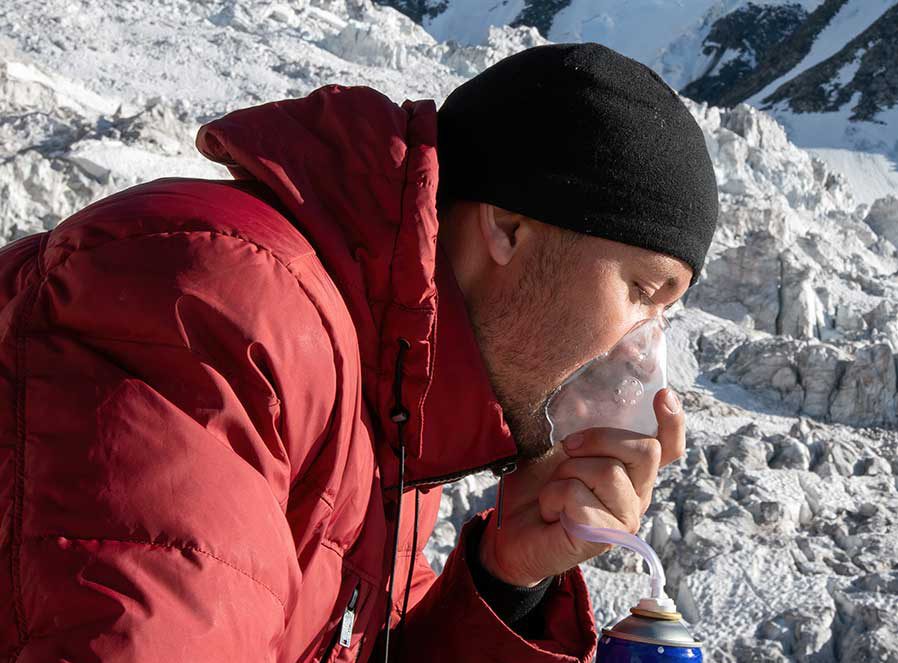
Langtang Valley Trek Cost Breakdown
The Langtang Valley Trek is one of the more affordable treks in Nepal, but costs can vary based on factors such as the type of trek package you choose, travel preferences, and duration. Below is a detailed breakdown of the costs involved in the Langtang Valley Trek.
🏞️ Total Cost of Langtang Valley Trek – A General Overview
| Expense Category | Estimated Cost (USD) |
|---|---|
| Trekking Permits | $50 – $70 (Total) |
| Guide & Porter Fees | $20 – $30 per day (per person) |
| Transportation (Kathmandu-Syabrubesi) | $10 – $25 (bus) / $150 – $200 (private jeep) |
| Accommodation (Teahouses) | $10 – $20 per night |
| Food & Drink | $15 – $25 per day |
| Insurance (Travel & Trekking) | $50 – $100 (for a week or more) |
| Miscellaneous | $20 – $50 (souvenirs, extra activities) |
1. Trekking Permits – $50 – $70 (Total)
- Langtang National Park Entry Permit: $30
- TIMS (Trekker’s Information Management System) Card: $10
- Conservation Area Permit (Optional, for some routes): $10 – $15
- Local fees (can vary by region): $5 – $10
These permits are essential for trekking in Langtang National Park. They can be obtained in Kathmandu or at the park’s entrance.
2. Guide & Porter Fees – $20 – $30 per day per person
- Guide: A licensed guide will cost you approximately $20 – $25 per day. A guide will help with navigation, safety, and cultural insights.
- Porter: A porter typically charges around $15 – $20 per day. Hiring a porter to carry your luggage can help make your trek more comfortable, especially with gear and supplies.
Tip: Hiring a guide and porter together will cost around $40 – $50 per day, but it’s optional. Some trekkers prefer to trek independently.
3. Transportation (Kathmandu-Syabrubesi) – $10 – $200
- Public Bus: The cheapest way to get from Kathmandu to Syabrubesi is by local bus. The cost is around $10 – $15 per person for the 7-8 hour journey.
- Private Jeep: If you prefer more comfort and flexibility, you can opt for a private jeep that costs approximately $150 – $200 (can accommodate up to 4-6 people).
4. Accommodation (Teahouses) – $10 – $20 per night
Teahouse accommodation is simple but comfortable and offers a cozy environment. The cost per night varies based on the location and amenities provided:
- Lower altitudes (Syabrubesi to Lama Hotel): $10 – $15 per night
- Higher altitudes (Langtang Village to Kyanjin Gompa): $15 – $20 per night
- Note: The teahouses often provide basic services like rooms with shared bathrooms, bedding, and meals.
5. Food & Drink – $25 – $30 per day
- The cost of food in Langtang Valley is reasonable, but prices rise as you climb higher due to the remote location. Expect to pay:
- Breakfast: $5 – $7
- Lunch: $6 – $10
- Dinner: $7 – $10
- Snacks & Drinks: $1 – $5 (for tea, snacks, and bottled water)
- Tip: Bring some snacks from Kathmandu to help reduce the cost of extra purchases along the trail.
6. Insurance (Travel & Trekking) – $50 – $100
It’s mandatory to have travel insurance that covers trekking at altitudes above 3,000m. Costs for insurance will depend on your provider, the duration of the trip, and the level of coverage. Expect to pay around $50 – $100 for a standard 7-10 day trekking policy.
7. Miscellaneous Costs – $20 – $50
- Souvenirs: Handmade crafts, prayer flags, or local goods can cost $5 – $15.
- Extra Activities: If you decide to take a scenic flight or visit local attractions in Kathmandu, you should budget an additional $20 – $50.
💰 Estimated Total Trek Cost
For a solo trekker on a budget (excluding international flights and insurance):
- Without guide/porter: $400 – $500
- With guide and porter: $600 – $800
For a group trek (sharing costs for guide, porter, and jeep):
- Budget trek: $500 – $700 per person
- Mid-range trek: $700 – $900 per person (including some comfort and private jeep transportation)
🌟 Summary: Langtang Valley Trek Cost
- Permits: $50 – $70
- Transportation: $10 – $200
- Accommodation: $10 – $20 per night
- Food & Drink: $15 – $25 per day
- Guide & Porter: $20 – $30 per day
- Insurance: $50 – $100
- Miscellaneous: $20 – $50
Packing List for Langtang Valley Trek
Packing for the Langtang Valley Trek requires careful consideration of both weather conditions and the altitude. Since this trek involves a variety of conditions, from lower altitudes to higher elevations, it’s important to pack light but with functional gear for the trek’s duration.
👟 Essential Trekking Gear
- Trekking Boots
- Waterproof & sturdy boots with good ankle support.
- Make sure they’re broken in before the trek to avoid blisters.
- Trekking Poles
- Adjustable trekking poles help with balance on rough and uneven terrain.
- They also reduce stress on your knees, especially during downhill hikes.
- Backpack
- A daypack (20-30L) for daily essentials, plus a larger backpack (50-60L) for your gear.
- Make sure your backpack is lightweight, durable, and has rain covers for protection.
🧣 Clothing for Trekking in Langtang Valley
Base Layer (Thermal Underwear)
- Moisture-wicking materials (e.g., merino wool or synthetic fabric) to keep sweat away from your skin.
- Top & Bottom for layering.
Mid Layer (Fleece or Down Jacket)
- A lightweight fleece or a down jacket for warmth at higher altitudes.
- Insulated jacket is recommended for colder nights at higher elevations.
Outer Layer (Waterproof Jacket & Pants)
- A waterproof and windproof jacket for protection against rain or wind.
- Waterproof pants for trekking in potentially rainy conditions.
Trekking Pants
- Comfortable lightweight trekking pants that are breathable and quick-drying.
- Some trekkers prefer convertible pants (pants that can be turned into shorts).
Thermal Socks & Gloves
- Wool socks are great for warmth and moisture management.
- Gloves: Waterproof, thermal gloves for chilly mornings and evenings.
Hat & Buff
- A warm hat for higher altitudes and a sun hat for protection during sunny days.
- A buff or scarf can protect your face and neck from dust, sun, and cold.
🧳 Personal Items & Essentials
- Sleeping Bag
- A sleeping bag rated for -10°C to -15°C is a good option.
- Some teahouses may provide blankets, but it’s good to have your own warm sleeping bag for comfort.
- Water Bottle / Hydration System
- Carry a reusable water bottle (1L-2L) or a hydration bladder.
- It’s important to stay hydrated at higher altitudes.
- Water Purification Tablets or Water Filter
- Purify your water with tablets or a portable water filter (e.g., LifeStraw) to avoid waterborne diseases.
- Snacks
- Pack energy bars, nuts, and dried fruit for extra calories during the trek.
- Chocolate or trail mix can be a great morale booster.
- Sunscreen & Lip Balm
- High SPF sunscreen to protect your skin from the strong Himalayan sun.
- Lip balm with SPF for preventing chapped lips.
- Headlamp & Extra Batteries
- A headlamp is essential for navigating in the dark, especially if you’re starting your trek early.
- Always carry extra batteries as power sources are limited in remote areas.
🎒 First-Aid Kit & Health Supplies
- Basic First-Aid Kit
- Include band-aids, gauze, disinfectant, and antiseptic cream for cuts and blisters.
- Pain relievers (e.g., ibuprofen or paracetamol) for headaches or muscle pain.
- Altitude Sickness Medication
- Consider carrying Diamox (acetazolamide) or other prescribed medications for altitude sickness.
- Always consult your doctor before the trek for recommendations.
- Insect Repellent
- Mosquitoes can be an issue in lower altitudes. Use DEET-based repellent.
- Personal Hygiene Items
- Wet wipes, hand sanitizer, and toothbrush/toothpaste.
- Toilet paper (carry your own as it may not be provided in remote areas).
🧭 Miscellaneous Items
- Camera & Extra Memory Cards
- The Langtang Valley Trek offers stunning views. Don’t forget your camera!
- Bring extra memory cards and a spare battery.
- Power Bank / Solar Charger
- Electricity is often available in teahouses, but charging can be slow.
- A power bank or solar charger will ensure you stay connected.
- Travel Insurance Documents
- Make sure to carry travel insurance documents, including emergency evacuation coverage.
- Documents
- Trekking permits (TIMS, Langtang National Park permit).
- Passport, Nepal Visa, and a copy of your passport.
🌟 Summary: Packing Essentials for Langtang Valley Trek
- Trekking Boots & Poles
- Clothing (Base layer, Mid layer, Outer layer, Gloves, Hat)
- Sleeping Bag
- Water Bottle & Purification System
- Snacks, Sunscreen, Lip Balm
- First-Aid Kit, Health Supplies, Insect Repellent
- Camera, Power Bank, Insurance Docs, Travel Permits
Packing Essentials for Langtang Valley Trek
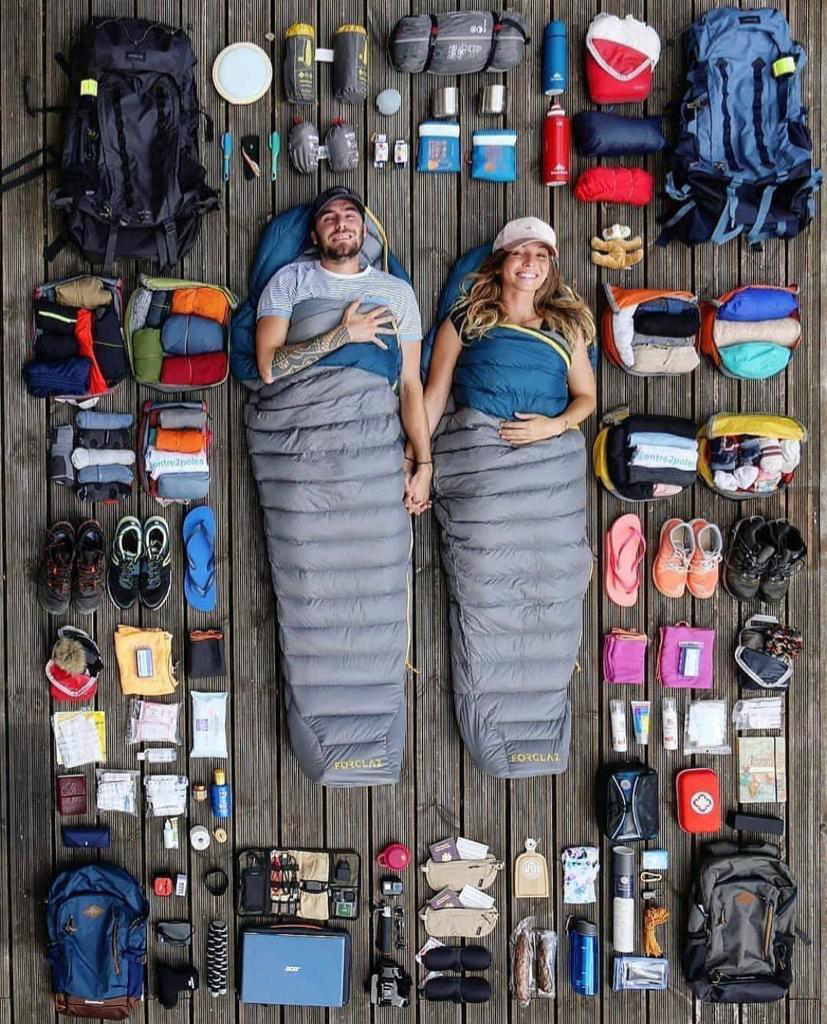
Langtang Valley is a glacial valley, with the Langtang Glacier and several smaller glaciers feeding into the Langtang River, which flows through the valley. Following the Langtang River, the trail subsequently passes through bamboo and rhododendron-filled, lush forests. Alpine trees and eventually open meadows become the trail’s dominant features as it ascends higher. The Langtang Himalayan range may be seen in its entirety from the Tserko Ri peak, which is the highest point of the walk at 4,984 meters.
Explore the Langtang Valley Trek with Touch The Hmalaya!
Embark on the breathtaking Langtang Valley Trek with Touch The Himalaya and experience the perfect blend of adventure, culture, and natural beauty. As you traverse through lush forests, charming Tamang villages, and high alpine meadows, you’ll be rewarded with stunning views of snow-capped peaks, including Langtang Lirung (7,227m). Our expert guides ensure a safe and enriching journey, providing insights into the unique traditions and warm hospitality of the local communities. Whether you’re a seasoned trekker or a first-time explorer, this trek promises an unforgettable Himalayan adventure. Join us and let Touch The Himalaya make your Langtang experience truly remarkable!
CONTACT US DIRECTLY THROUH OUT OUR SOCIAL MEDIA
Please Fill up this form to proceed
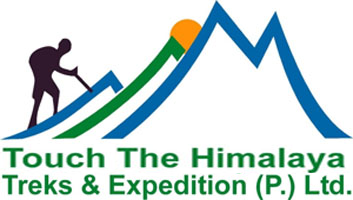
Touch The Himalaya Treks & Expedition
P.O. Box No: 23434, Chhetrapati – J.P Road Marg, Thamel, Kathmandu, Nepal.
Telephone: 977-1-5357629 Mob/Viber/WhatsApp: +977 984 161 9019. (Mr. Madan Neupane)
Emails: mail@tthimalaya.com, tthimalaya@gmail.com
8 Days Langtang Valley Trek Itinerary
Drive from Kathmandu to Syabrubesi (1,503m) 🚗
Trek from Syabrubesi to Lama Hotel (2,480m) 🥾
Trek from Lama Hotel to Langtang Village (3,430m) 🏔️
Trek from Langtang Village to Kyanjin Gompa (3,870m) 🏯
Acclimatization & Hike to Kyanjin Ri (4,773m) or Tserko Ri (5,033m) ⛰️
Trek from Kyanjin Gompa to Lama Hotel (2,480m) 🏡
Trek from Lama Hotel to Syabrubesi (1,503m) 🌿
Drive from Syabrubesi to Kathmandu 🚌
Itinerary Note:
Above mentioned 8 Days Langtang valley trek itinerary is just a guideline, it can be changed (longer or shorter) as per our client's wishes, fitness, ground reality, and weather conditions. If you're not satisfied or have an alternative plan please feel free to discuss it with us By Clicking:- ASK QUESTION or COSTOMIZE YOUR TRIP.What's Included / Excluded
Cost Incluldes
- Airport pick up and drop off by Car, jeep, Hiace or Bus. Depends on the number of arrives.
- Complimentary welcome or farewell dinner according to the suitability of our client’s time.
- Kathmandu to Syprubesi (trekking starting point) transfer by Bus, and way back from Syprubesi to Kathmandu bus.
- All necessary trekking permits permit and fees, (Entry Permit, Langtang National Park Permit and TIMs cards).
- Three meals a day during the trek (Breakfast/Lunch/Dinner)
- All accommodation during trek (Tea house/guesthouse)
- An experienced, English-speaking, government-licensed, first aid-trained Langtang special trekking guide and assistant guide ( 10 trekkers: 1 assistant guide)
- Expert local porters (2 trekkers: 1 porter)
- Duffel bag, (to be returned after trip completion), complementary trekking maps. If needed down jacket and sleeping bag will be provided in rent.
- Staff costs including their salary, insurance, Equipment, transport, food, and accommodation.
- Rescue arrangements if necessary.
- Basic First-aid kit (carried by trekking guide)
- All government and local taxes for Trekking, Agency service chargesVAT and government tax/vat.
- Achievement Certificate
Cost Excludes
- International airfare and Nepal visa fee.
- Food and Accommodation in Kathmandu
- Extra night accommodation in Kathmandu because of early arrival, late departure, early return from the mountain (due to any reason) than in the scheduled itinerary
- Personal insurance which covers medical, emergency evacuation, lossor o,r theft of property.
- Personal gear and equipment.
- Personal expenses such as laundry, hot showers, battery charging, Wifi, etc
- Entry fees and costs in sightseeing (temples, monasteries, etc)
- Tips and gratitude provided to guide and porter.
Fixed Departure
If you couldn't find trip as your schedule Date, Customize your Trip in your suitability.
Tips for a Successful Langtang Valley Trek
Following Tips are for a Successful Langtang Valley Trek
The Langtang Valley Trek is an unforgettable journey with stunning views, a rich cultural experience, and challenging terrain. To ensure your trek is safe and enjoyable, here are some final tips to help you prepare and make the most of your adventure.
Take It Slow & Listen to Your Body
Pace Yourself: Trekking in the mountains can be physically demanding, especially as you gain altitude. Don’t rush the trek—take it slow and enjoy the scenery.
Altitude Sickness: Altitudes above 3,000m can affect anyone, so it’s crucial to acclimatize properly. Take rest days, drink plenty of water, and don’t ignore symptoms like headaches or dizziness.
Rest When Needed: If you feel exhausted, take breaks, and don’t push yourself too hard.
Stay Hydrated & Eat Well
Hydration: At higher altitudes, dehydration can happen quickly due to the dry air. Drink 3-4 liters of water per day to stay hydrated. You can purify water from streams using a water filter or purification tablets.
Healthy Eating: The trek involves long days of walking, so keep your energy up with nutritious meals. Stick to a balanced diet of carbs, proteins, and healthy fats.
Pack Light but Smart
Lightweight Packing: You’ll be carrying your own gear for most of the trek, so keep your backpack as light as possible.
Essential Items Only: Bring only what you need—extra layers, a warm sleeping bag, and essential trekking gear. Avoid over-packing as you’ll need to carry your bag for long periods.
Pack Extra Snacks: Bring easy-to-carry snacks like trail mix, energy bars, and chocolate to keep your energy up on long days.
Know the Local Culture & Respect It
Cultural Sensitivity: Langtang Valley is rich in Tibetan culture. Be respectful when interacting with local communities. Always ask permission before taking photos of people or sacred sites.
Dress Modestly: Be mindful of the local customs when it comes to dress, especially in monasteries and spiritual sites.
Support Local Communities: Buy local goods or handmade crafts along the trail to support the local economy.
Bring Cash with You
Limited ATM Access: There are no ATMs in Langtang Valley, so make sure to bring enough cash for your entire trek.
Small Bills: Carry small denominations of Nepalese rupees for tips, food, and small purchases.
Prepare for Weather Variations
Layer Your Clothing: Weather in the mountains can be unpredictable. Be prepared for cold temperatures, rain, and even snow in higher elevations. Always layer your clothing for easy adjustments.
Rain Gear: Bring a waterproof jacket and rain cover for your backpack—weather can change quickly, and you want to stay dry.
Sun Protection: Even in higher altitudes, the sun can be intense. Sunscreen, sunglasses, and a hat are essential for protecting your skin and eyes.
Communication & Connectivity
Limited Connectivity: Expect limited phone signal and internet on the trek, especially as you ascend.
Emergency Contacts: Keep the number of your trekking company and emergency contacts handy in case of unforeseen circumstances.
Satellite Phones: Some teahouses may offer satellite phone rentals if needed for emergency communication.
Insurance is a Must
Travel Insurance: Always ensure you have travel insurance that covers trekking and emergency evacuation.
Evacuation Coverage: This is crucial in case of an emergency where you need to be evacuated by helicopter or a different form of transport.
Check Your Gear Before the Trek
Test Everything: Before you leave for Nepal, test your gear to ensure everything works. Check your boots, sleeping bag, headlamp, and trekking poles.
Weather-Appropriate Clothing: Ensure your clothing layers are suitable for high-altitude trekking.
Backup Items: Carry extra batteries, chargers, and any medications you may need.
Enjoy the Journey
The Langtang Valley Trek is as much about the journey as it is about the destination.
Take time to appreciate the natural beauty, the local culture, and the friendly hospitality of the people along the way.
Capture the memories through photos, but also take time to just breathe and soak it all in.
Conclusion: Ready for the Langtang Valley Trek!
By following these final tips, you’ll be well-prepared for a safe and rewarding Langtang Valley Trek experience. Whether you’re a seasoned trekker or a first-time adventurer, this trek offers a perfect blend of natural beauty, cultural immersion, and physical challenge.
